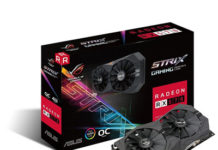VRAM to the video card is somewhat like RAM is to the CPU. Except for the video card its a temporary hub in which all of the details and information of the graphical content are before they’re displayed onto the monitor.
How much should a video card have? It’s not cut and dry, because it depends on what you are using it for. But in general. Minimum: 2 GB of VRAM. Recommended: 3-4 GB of VRAM. In a few years, the number could easily be 6-8 GB.
For video or photo editing, it definitely wouldn’t hurt to have 8 GB of VRAM if you are a professional, but keep in mind that the CPU is far more important for these tasks and for these applications, you should not go for the video card with the most VRAM if it means sacrificing on quality. For 3D modeling, animation and other types of workstation work of this nature, more VRAM can be beneficial.
For gaming, 3-4 is definitely in the sweetspot as well. Some games do consume a lot of VRAM, but in general, there are diminishing returns. For example, in comparing both the 3 GB and 6 GB version of the GTX 1060, the 6 GB version offers a moderate but not significant improvement in gaming benchmarks.
Should I go with the Video Card with more VRAM?
The generally timeless answer to this question, even when comparing older video cards, is that double the VRAM does not necessarily mean a significant performance boost. While more VRAM is not inherently bad, the issue is that cards with extra VRAM often lack the processing power for the VRAM capacity to even be filled. The information, of course, has to be processed before it can be stored. Video cards with more processing power can definitely benefit from more VRAM.
Some may make the argument of “get the video card with more VRAM; it’s more future proof”. To an extent, this is true. Games and programs will be using more as time goes on. However, as stated before, more VRAM can’t save a dated GPU; by the time the 3 GB of VRAM in the GTX 1060 is outdated, the card itself is likely to be outdated. Price is a determining factor, as always. A card with more VRAM is worth paying a bit extra for, but is probably not worth making large sacrifice over.



